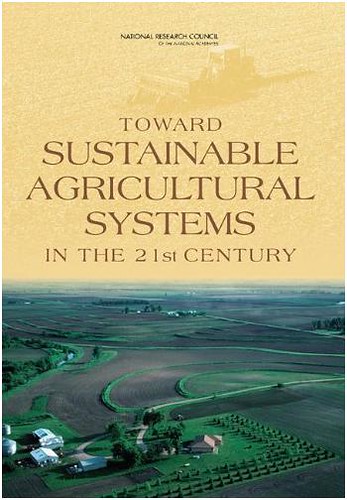Support local farmers, strengthen rural communities, promote healthy eating, and protect natural resources…these goals of our Know Your Farmer, Know Your Food initiative find a lot of support in the results of a major new scientific study by the National Research Council, Toward Sustainable Agricultural Systems in the 21st Century. A group of fifteen experts spent three years reviewing many hundreds of scientific papers and detailed case studies of sixteen farms to understand how U.S. agriculture can “produce more crops, pollute less, fulfill consumer preferences, pay fair wages, and make a living – all with increasingly scarce natural resources such as land and water.”

The report catalogs how far we have come – producing more food and fiber on about the same acreage as a century ago, with less labor, energy and water used per unit of output, and considerably less soil erosion. It also catalogs many concerns that remain and challenges that lie ahead, such as increased demand; loss of farmland; water scarcity; quality of water, soil and air; loss of biodiversity; rising input costs; loss of mid-sized commercial family farms; and concerns about farm labor, food security, animal welfare, and community well-being.
We should pursue two parallel efforts to meet these challenges, according to the report. One is an “incremental approach” which expands the adoption of improvements that many farms have made and many more can yet make: conservation tillage, cover cropping, crop rotations, water and nutrient management, integrated pest management, animal breeding and nutrition, and improvements in animal health and welfare. The other is a “transformative approach” that seeks to design farming systems to balance the four goals of sustainability from the outset. They describe several examples of these systems: organic cropping systems, integrated crop-livestock systems, management-intensive rotational grazing, low-confinement integrated hog production, and perennial crop production for grains and for biofuels.
They recommend we step up our investments in science to achieve these ends, particularly more research that addresses socioeconomic and biophysical factors and their integration in resilient systems, long-term research at watershed/landscape scale, research and extension that involves farmers as full partners, and research on the “drivers” of change: markets, policies, knowledge institutions, and stakeholder involvement.
Several USDA agencies and other partners are sponsoring a symposium on September 16, 2010, to encourage discussion of the report and its implementation. See the Farm Foundation web site for more information.
You can order the report, or read it page-by-page for free on the web, including the sixteen farm case studies – sixteen ways to get to know a farmer!
